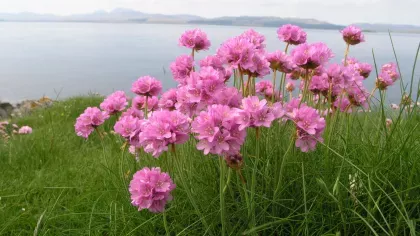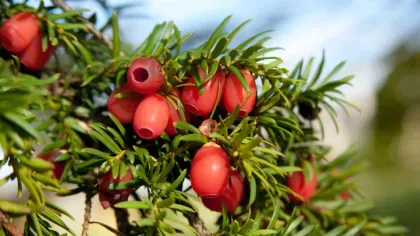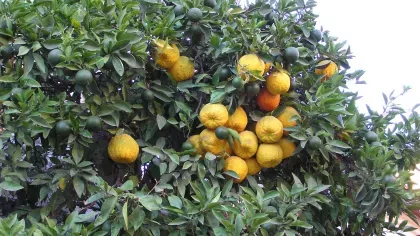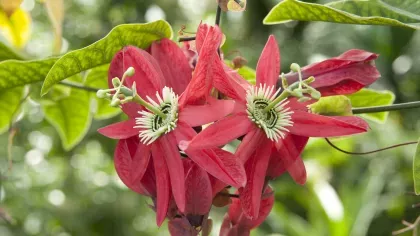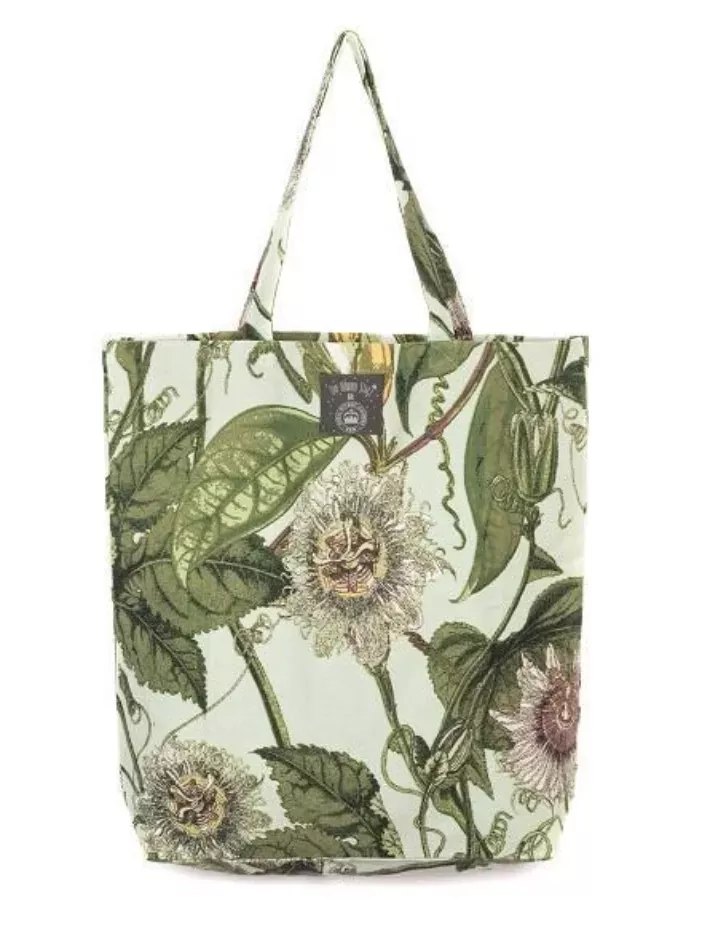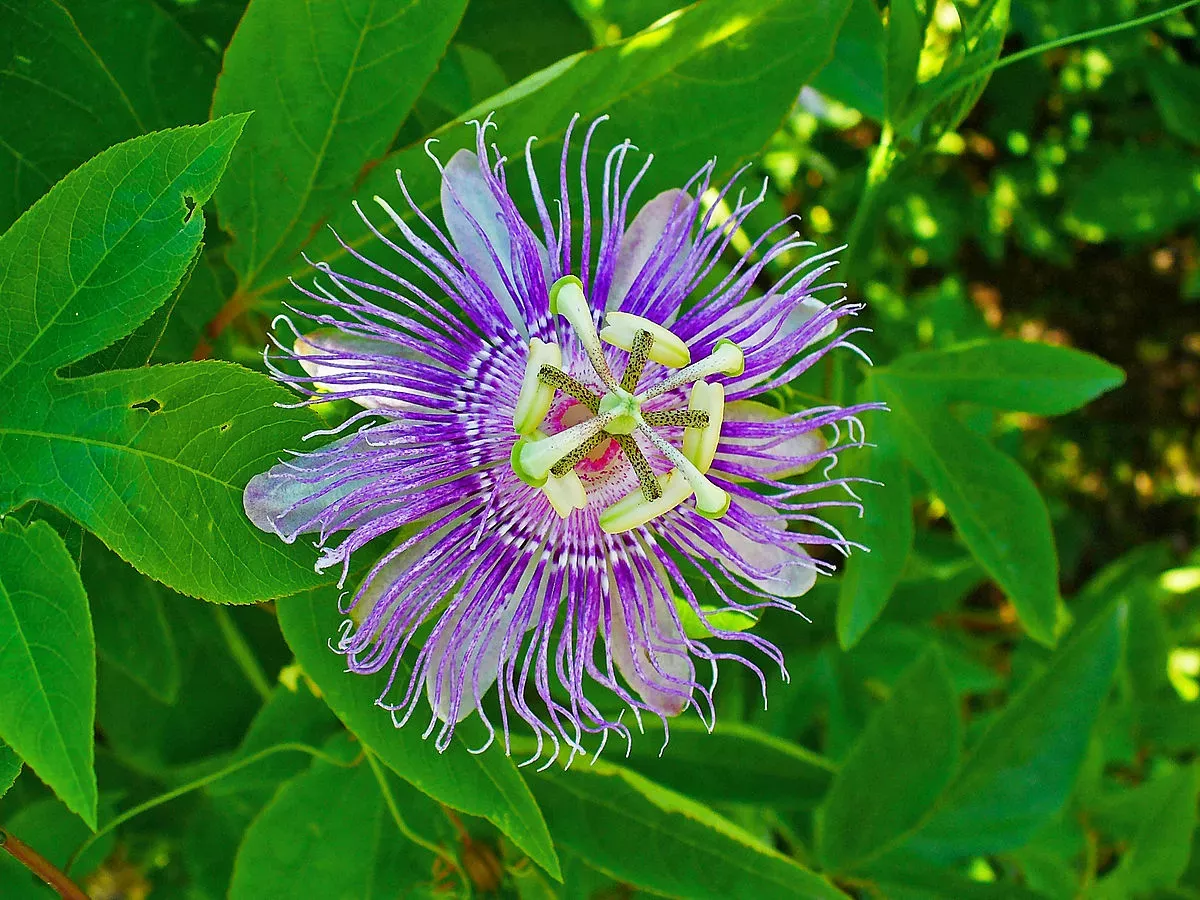
Purple passionflower
On this page
One of the must-see wonders of the plant world, the purple passionflower boasts intricate blooms that explode with colour.
From the striking flowers that are frequented by buzzing bees and butterflies, come delicious passion fruit.
Plant description
Tendril climber with evergreen leaves and showy, pale purple and white flowers. The flowers have several unique structures, including a circle of filaments radiating out from the centre of the flower (called a corona), and an elongated stalk that rises from the middle of the flower (called an androgynophore). Purple passionflowers also produce fleshy, rounded fruit that are first green and then yellow as they mature.


Plant uses
Beauty and cosmetics
Purple passionflowers are used to add a refreshingly sweet fragrance to hair care products.
Cultural
Their striking flowers and juicy fruit mean purple passionflowers are often planted as ornamentals.
Food and drink
The yellow, fleshy fruit of the purple passionflower is deliciously edible.
Health
Purple passionflowers are sometimes found in herbal remedies that may help with anxiety and sleeping problems.
Did you know?
There are more than 550 species of passionflower, some of which produce edible fruits. The passion fruit found on supermarket shelves are often from the species, Passiflora edulis.
Some passionflowers produce poisonous fruit, containing chemicals called cyanogenic glycosides that combine with enzymes in saliva to produce cyanide.
The distinctive floral structures in passionflowers often mean that a species relies on a single pollinator.
Passionflowers are host plants for the caterpillars of some species of butterfly. The butterflies lay their eggs on passionflowers, and when they hatch, the caterpillars greedily feed on the leaves. Passionflowers have evolved several defence mechanisms from camouflage, to traps, to poisonous toxins, to avoid damage by butterflies and other insects.
The genus name Passiflora (passionflower) came from 16th century Christian missionaries who believed the flowers symbolised the Passion of Jesus Christ.
Where in the world?

Find it in our gardens
Kew Gardens
A botanic garden in southwest London with the world’s most diverse living plant collection.
Location
Behind the scenes in our Tropical Nursery. Other passionflower species can be found in our Temperate House.
View map of Kew GardensOur work
A Kew scientist studied the floral development of passionflowers.
In most species of passionflowers, the flowers are radially symmetric (its parts are regularly arranged and radiate from a central point) and have five sepals, five petals, a ring of filaments (corona), five stamens, an ovary and three styles.
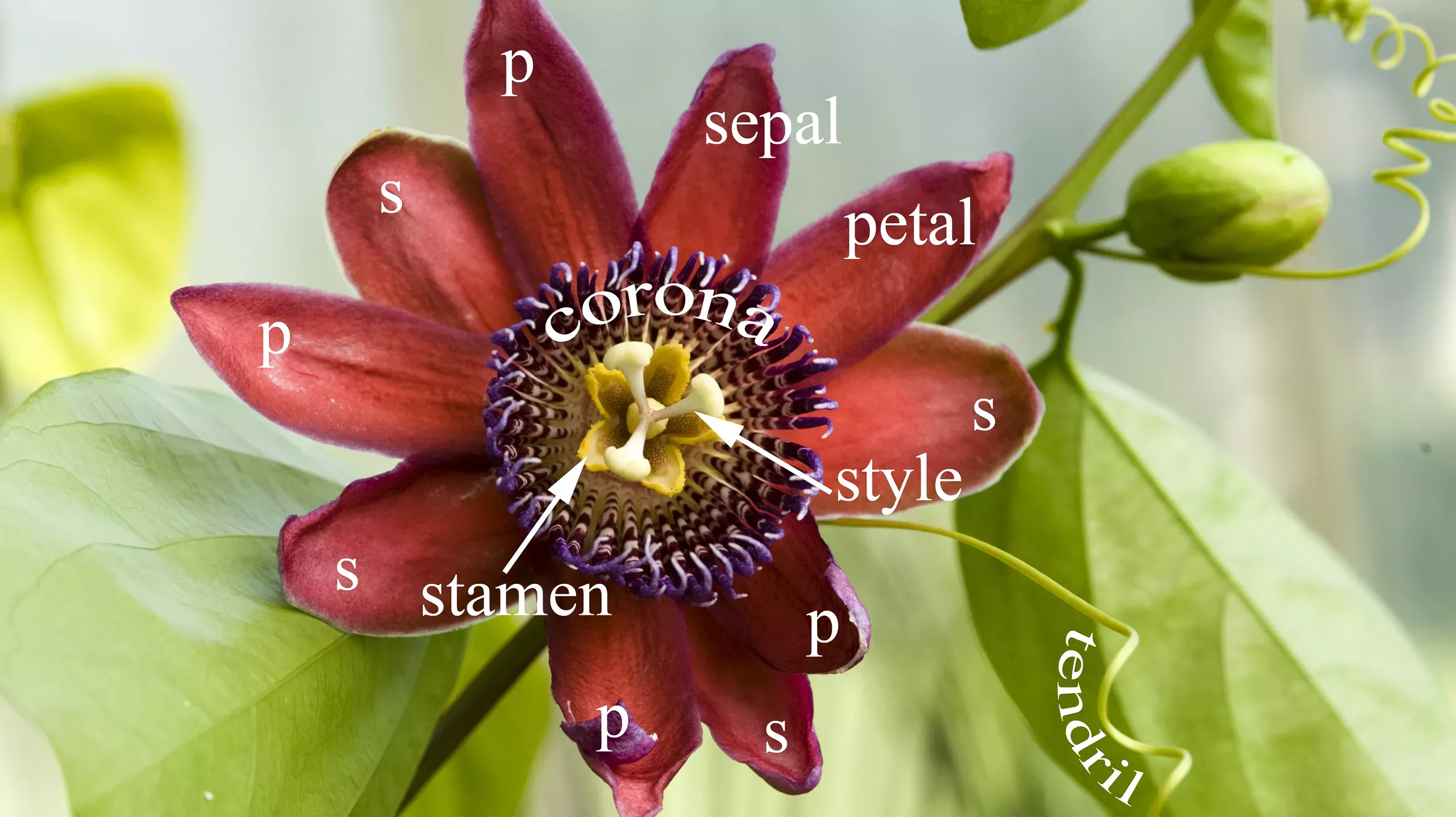
The species, Passiflora lobata, has a unique floral structure in that it has four instead of three styles and its flowers have a single plane of symmetry (divides into two mirror image halves).
The study gave interesting insights into the sequence of floral organ formation that led to the mirror symmetry, as well as the developmental processes behind the formation of the fourth style, which helped enhance understanding of the peculiar passionflower.
